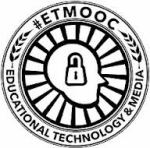Let’s use a blog posting for a bit of digital storytelling on the theme of digital storytelling—we’ll use words, pictures, links to videos, and a variety of other digital assets, but the heart of this is the story.
 It begins with the idea that if you take even the most shallow step into the fertile field of connected learning and rhizomatic learning, you’ll soon see it expanding all around you, as I did this morning while having coffee in Berkeley with a friend and exploring the topic of digital storytelling with her. We talked about how Dave Cormier’s rhizomatic learning model posits the existence of a wonderfully ever-expanding network of learning connections rooted in creation, collaboration, and the building of communities of learning—and that’s exactly what my library colleague Darcel Jones and I experienced during our coffee time together.
It begins with the idea that if you take even the most shallow step into the fertile field of connected learning and rhizomatic learning, you’ll soon see it expanding all around you, as I did this morning while having coffee in Berkeley with a friend and exploring the topic of digital storytelling with her. We talked about how Dave Cormier’s rhizomatic learning model posits the existence of a wonderfully ever-expanding network of learning connections rooted in creation, collaboration, and the building of communities of learning—and that’s exactly what my library colleague Darcel Jones and I experienced during our coffee time together.
Telling her about #etmooc—the Education Technology and Media MOOC (Massive Open Online Course) organized by University of Regina professor of educational and media Alec Couros and several “co-conspirators”—and mentioning that we were beginning to explore digital storytelling as the second of five #etmooc topics to be explored in the course inspired her to extend the learning rhizome by reminding me that digital storytelling combines two key elements of contemporary library work: storytelling and technology. The California-based library training organization Infopeople, she noted, actually produced an hour-long webinar on the topic—“Introduction to Digital Storytelling: Everyone Has a Story to Tell”—in 2011; that webinar, in turn, leads us to information about the Digital Story Station project in San Diego.
My own online explorations after our conversation ended further extended the learning rhizome substantially by providing plenty of examples of what she described—not the least of which was a Library Journal article describing “the cutting-edge library center in Delft”—a “multi-media center featuring several ‘tell-stories’ stations, a video recording station, and a video wall that measures about 33′ x 10′. Think of it as NPR’s StoryCorps exploded.”
It was only a small leap from that story to a major growth spurt in this personal learning rhizome, for the next link led me to Joe Lambert and the Center for Digital Story Telling—right there in Berkeley where Darcel and I had been having coffee. And that’s where the rhizome shot off in multiple directions simultaneously. There were case studies—stories—about how the Center partners with organizations worldwide. There was a link to a rich archive of beautifully-told digital stories on YouTube. And there was, via Joe Lambert’s bio, a lovely reminder that I had actually met Joe for the first time less than two weeks ago when we were both in Austin, Texas, for the New Media Consortium’s Future of Education summit—an event at which he did a brief presentation on the work of the Center for Digital Story Telling.
Viewing the Center’s YouTube archives this afternoon sent me right back to the digital story Joe had shared with us in Austin: “The Gift of Nonviolence,” by LeRoy Moore. I was tremendously moved when Joe first played the video—the story of how a boy overcame parental abuse though a spontaneous act of nonviolence—for all of us that morning. I was even more moved by how the disparate elements of diving into #etmooc a few days ago, learning about rhizomatic learning over the weekend, talking to Darcel about libraries and digital storytelling this morning, and then beginning to compose this digital story that led me back to Joe this afternoon confirm the rhizomatic nature of learning and the wonders of the onsite-online world we inhabit.
It’s clear those digital storytelling rhizomes are still multiplying almost faster than I can document. They led me to a first-rate EDUCAUSE article, “7 Things You Should Know About…Digital Storytelling,” that made me aware of yet another local storytelling resource: the KQED (PBS) Project VoiceScape initiative that encourages teens “to create compelling stories about issues and concerns important to them.” They also led to an article, “The Case for Digital Storytelling in Libraries,” that linked me to a video created by my colleague David Lee King, who had engaged in digital storytelling in 2010 by documenting innovations at the DOK Library Concept Center, in Delft.
And, through the continuing work that #etmooc is doing in drawing me into a worldwide community of learning, I’m very much looking forward to hearing and continuing to share stories with the rhizome-like multiplication of learning connections in the days and weeks to come.
N.B.: This is the fourth in a series of posts responding to the assignments and explorations fostered through #etmooc. It is a rhizomatic learning extension of a six-word story prepared for the #etmooc storytelling module (“Inspiration: From morning coffee, ideas flowed.”) and posted in the course Google+ community on February 4, 2013.
